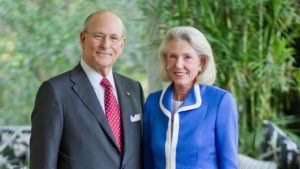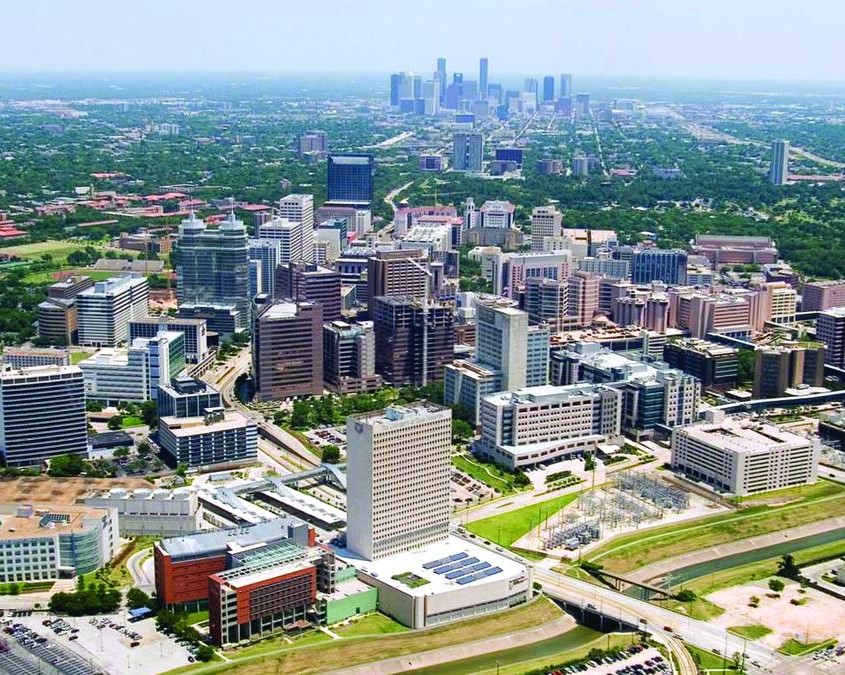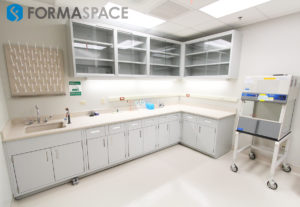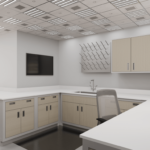The Texas Medical Center in Houston is in a class by itself. It’s the world’s largest medical complex, home to the leading cancer treatment institute, M.D. Anderson Cancer Center. Today’s TMC (as it’s commonly called) has 56 member institutions, including 21 renowned hospitals, 13 support organizations, eight academic and research institutions, six nursing programs, three public health organizations, three medical schools, two universities, two pharmacy schools and one dental school.
Dr. Robert “Bobby” Robbins Gave Tribute to David M. Underwood and His Exemplary Leadership
It was with great sadness that the TMC community learned in late August that the TMC’s longest-serving chairman (23 years) and board member (nearly 40 years) David M. Underwood passed away. Mr. Underwood’s leadership saw the institution grow from 24 to 56 members. Yesterday at the Greater Houston Partnership meeting on the future of the Texas Medical Center, the President and CEO of the TMC, Dr. Robert “Bobby” Robbins, gave a tribute to his boss David Underwood, saying we have to remember his guiding principle: “onward and upward.” It’s quite likely that David Underwood found a kindred soul in Dr. Robert “Bobby” Robbins, a Mississippi native and renowned cardiologist that the TMC recruited from Stanford University’s medical program. It’s indicative of the trust that the TMC placed in Dr. Robbins, given that he is not a traditional MBA type executive, he is a clinical practitioner and heart surgeon.

There’s no question that Dr. Robbins has hit the ground running. In his three short years of tenure as President and CEO of the TMC, he’s grabbed the bull by the horns and changed the direction of the institution in profound ways. Robbins recognized that the TMC, with its 7000 beds, represents a unique opportunity to be the world leader in clinical research for drug discovery and clinical trials. Robbins has identified five key initiatives that he believes will help propel the TMC to a world leadership position, catapulting Houston to the top tier of pharmaceutical research and medical device development regions — perhaps even exceeding current centers of excellence, such as Boston, San Francisco, Singapore and Switzerland, in the coming 10 to 20 years.
So What’s Next for the Texas Medical Center?
A major cultural change is underway at the Texas Medical Center. The member institutions are changing how they work with each other, moving away from competition between the member institutions to what Dr. Robbins calls collaborative competition or collabitition. At a series of planning meetings over the last two years, the Texas Medical Center has identified five key areas of focus.
First, it wants to be a leader in Health Policy. Second, it wants to leverage the research science to become a leader in Genomics. Third, it wants to take advantage of its 7000 hospital beds to be the leader in Clinical Trials for new drugs and medical devices. Fourth, it wants to assume a leadership role in Regenerative Medicine. And fifth, it wants to drive Innovation in healthcare, life sciences and digital health technologies.
The institution is moving faster than it ever has before. In just under two years, the Texas Medical Center established TMCx, its business accelerator program. Established in an unused Nabisco cookie factory, the enormous facility has been completely renovated into a model business accelerator — offering a six month mentoring program for life science startups. Uniquely, the TMCx does not take equity positions in its startup members. The first graduating class from the TMCx made its debut last Thursday at TMCx Demo Day. During TMCx Demo Day, twenty one startups from the program presented a range of new ideas, from medical IT systems, brain testing, fetal oxygen level measurement, surgery blood loss assessment, synthetic collagen, and more.

But there’s a lot more in the pipeline. At the same facility, Johnson & Johnson is opening up their new JLABS clinical testing facility in 2016. Dr. Robbins also announced a new Bio Design program, modeled after successful curriculum at Stanford University. This new Bio Design program is already taking applicants and will start in early 2016 as well.
Finally, at TMCx Demo Day and at yesterday’s Greater Houston Partnership presentation, Dr. Robbins revealed plans to dramatically increase the size of the Texas Medical Center campus. This ambitious new plan, which is currently under consideration by the member institutions and oversight boards of the state of Texas, would add huge new facilities for clinical research in drug discovery and clinical trials. According to Dr. Robbins, construction could start in 2016. We have our money on Dr. Robbins.
Formaspace is Looking to the Future

We invite you to join the roster of satisfied Formaspace technical, manufacturing and laboratory furniture clients — including Apple Computer, Boeing, Dell, Eli Lilly, Exxon Mobile, Ford, General Electric, Intel, Lockheed Martin, Medtronic, NASA, Novartis, Stanford University, Toyota and more.
Give us a call today at 800.251.1505 to find out more about the Formaspace line of built-to-order computer workstations, industrial workbenches, laboratory furniture, lab benches and dry lab/wet labs — as well as our design / furniture consulting services. Like all Formaspace furniture, it’s backed by our famous 12 year, three shift guarantee.









